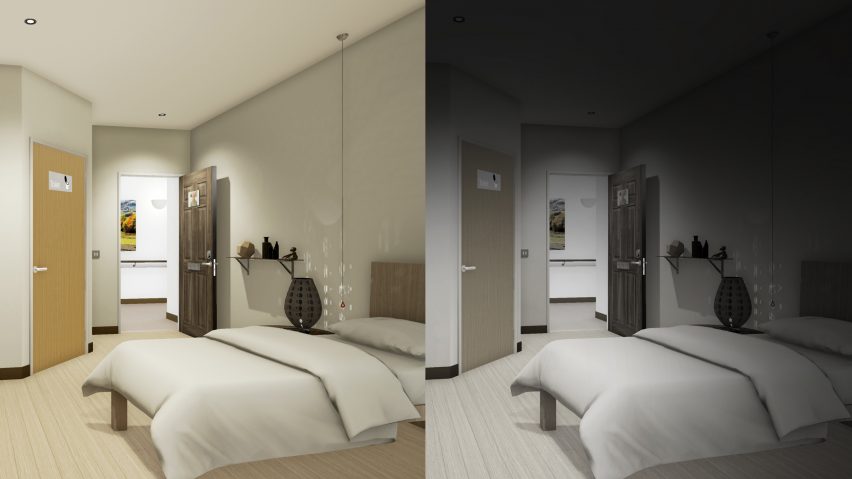
New virtual reality tool helps architects create dementia-friendly environments
Scottish architect David Burgher has developed a new virtual reality tool that mimics the visual impairments experienced by dementia sufferers to help architects design better spaces.
Burgher, an architect at Scottish practice Aitken Turnbull, worked with researchers from the Dementia Centre and the Glasgow-based CGI company Wireframe Immersive to create the tool named Virtual Reality Empathy Platform (VR-EP).
The VR-EP kit comprises a laptop with high-performance graphics, a virtual reality headset, games controller, camera and bespoke software programming.
Those wearing the virtual reality headset are able to experience some of the symptoms of dementia, including dimmer lighting. Burgher hopes the tool could be used to gauge appropriate lighting levels, room layouts and way-finding to improve design of care homes, hospitals and sheltered housing.
"People with dementia can have perceptive and cognitive impairments, which is compounded in older people who see the world in a much hazier way," Burgher told Dezeen. "This can lead to anxiety, confusion and disorientation."
"VR-EP replicates these visual impairments through a digital filter process in a fully immersive and interactive virtual reality environment."
Over 800,000 people are currently living with dementia in the UK, with the number expected to grow to 1.7 million by 2051. The cost of care is estimated at £26.3 billion per year, outstripping that spent on cancer and heart disease together.
Burges believes this figure could be minimised by designing "dementia-friendly" spaces from the outset, helping those with dementia to live more independently and reducing the number of accidents.
“As well as reducing anxiety, the improved design offers a better, safer and more independent quality of life. Dementia-friendly design doesn't have to cost more," said Burgher. "In fact, by using VR-EP, designers will get it right first time and therefore reduce costs."
"It can reduce risk of accidents and aggressive behaviour, improve staff recruitment and retention, and save on the significant costs associated with dementia care."
Aitken Turnbull Architects and Wireframe Immersive hope to adapt the virtual reality tool to give architects empathy for a range of sensory disorders and export it for use across Europe, China and the US.
Recent virtual reality developments include Gravity Sketch, which allows designers to edit and manipulate objects in virtual reality, as opposed to on a desktop screen.